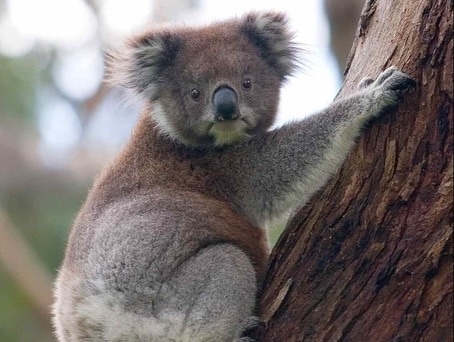Friends of the Koalas Inc. is a not for profit group based on Phillip Island in Victoria, Australia.
|
Koalas were not found on Phillip Island at the time of European settlement and are not endemic to the island. They were first introduced in the 1870s or 1880s from the nearby mainland population. At first the population was fairly static but, with the introduction of 50 animals from French Island (which is chlamydia free) in 1923 the population expanded rapidly and, by 1941, it became necessary to remove some koalas to prevent them from destroying their food trees.
Between the first translocation in 1941 and the last in 1978 over 3400 koalas were removed from Phillip Island and released into suitable habitat in other parts of Victoria. Koalas from Phillip Island and French Island helped to re-establish koalas in their former ranges on mainland Victoria. From the 1980s Phillip Island's koala population began to decline steadily. The reasons for this decline were increased urbanisation causing habitat loss, road deaths and dog attacks and low fertility mainly caused by chlamydia infection. Despite the best efforts of authorities and conservation groups, like Friends of the Koalas, koala numbers have continued to decline and the current population on Phillip Island (outside the Koala Conservation Centre) is estimated to be less than 50 |
|
Friends of the Koalas was established in March 1990 due to continuing concern about the decline in the koala population on Phillip Island.
The Koala Conservation Centre (KCC ) was also being created at the time and was officially opened in June 1992. Friends of the Koalas held a Community Summit on Koalas in 1991 and also helped plant the food plantation at the KCC. Since then the group has concentrated on revegetation projects, koala counts and raising funds to assist with habitat work and also support the Barb Martin Bush Bank (an indigenous plant nursery at the KCC). FOK also lobbies on issues that affect koalas and keeps people informed and educated with a quarterly newsletter. |
|










